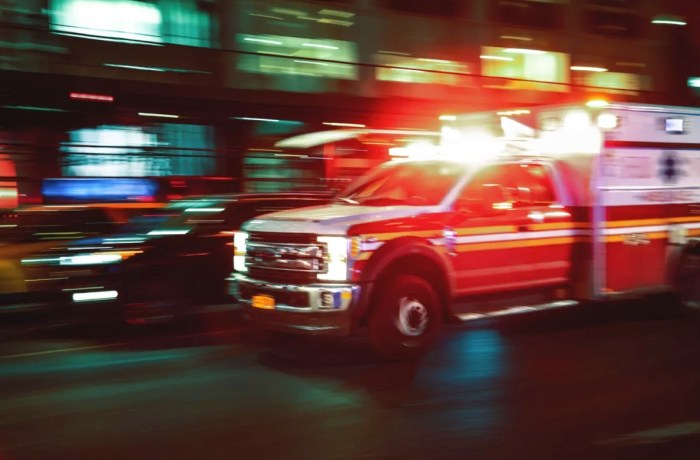By Bob Friedrich
The commuters who struggled to get to work during the exceptionally cold three-day strike brought out the best. But the overreaction by Iris Weinshall and her city Department of Transportation coterie in creating travel restrictions that can only be described as draconian surely needs some reappraisal. If you were among the one in seven lucky New Yorkers who lives in Manhattan or nearby one of the East River crossings in Brooklyn, you had an easier time getting to work than the rest of us. Yes, we saw your pictures plastered in every newspaper and on all the TV stations as you gallantly marched across the Brooklyn Bridge. Walking over that bridge was simply not an option for us. And, if you lived in Glen Oaks Village at the outer reaches of the city, it became almost impossible to get to work or to drive into Manhattan with the four-passenger-per-car minimum. The streets in midtown before 11 a.m. when the four-to-a-car restriction was in place were practically empty. I know because I saw it with my own two eyes. Fifth Avenue from 14th Street and north is usually filled with honking cars, trucks and taxis. But on these three days, there was mostly silence. The streets were empty because all the cars were gridlocked north of 96th Street. This is not anecdotal. A look at the actual vehicle crossings at the tolled river crossings showed that they were at 75 percent of normal capacity. One would expect that in a transit strike scenario we would see an increase in the crossings and a 25 percent increase should be expected. This is why crossing restrictions are established, to bring some control to the number of vehicles that may enter the city. But the overly restrictive plan created a 25 percent reduction in vehicle crossings during this critical time period, thereby underutilizing existing roadway infrastructure and creating havoc for those who needed to get to work from eastern Queens.The initial plan dictated by Commissioner Weinshall should have first required two occupants to a car and then been made more restrictive if the number of vehicle toll crossings exceeded capacity. The plan that was implemented was never fine-tuned during the next few days. Where were the voices of our local representatives speaking out for their constituents in the far reaches of the city's outer boroughs? The silence from Councilman David Weprin, Tony Avella and John Liu, who is chairman of the City Council Transportation Committee, during the strike was not helpful. As one who struggled each day during this strike to get to Manhattan, it seemed as if our elected representatives at City Hall and the unelected officials at DOT were out to lunch.And of those who did have something to say, most disturbing were the comments by state Assemblyman Brian McLaughlin, who not only supported this illegal strike but showed his alliance not to his constituents who tried to get to work but to the union who engaged in this illegal strike. This was certainly not a surprise, as Assemblyman McLaughlin often wears his other “Labor Leader” hat, being president of the city's powerful Central Labor Council. If ever there was a case of a legislator having a conflict of interest it is here. Not only did he support the illegal strike, he even supported the solicitation of strike fund contributions from other unions to be used to diminish the strike's effect and negate its impact on the transit union workers. The Jan. 12 issue of the Glen Oaks Ledger reported that McLaughlin will not seek re-election to another term and denies that any conflict of interest concerns spurred his decision. Credible? It certainly doesn't resonate with me, and why has the Queens Democratic leadership allowed this situation to exist for so long? To his credit, McLaughlin doesn't wear his two hats in secret. Can you really blame the Democrats or even Assemblyman Brian McLaughlin? The true culprits are the voters who for 16 years have elected him, never asking questions or demanding that he hang up one of his hats. Getting back to the strike – the MTA needs to do a better job educating the public as to the actual benefit package and demands of the TWU. Had they done that, I think the public would have been supportive of the MTA's position even as they endured the strike. Soon the well will be dry and another property tax increase will be exacted from us. I certainly don't begrudge any union's fighting for its members, but, at the end of the day it will be the poor slobs like us who end up footing the bill for those inflated and out of proportion benefit packages. There was a time when the trade-off for a lower paid civil service job was job security. Today that unwritten agreement no longer exists. The TWU now has it both ways. Just ask yourself if you have those workers' salaries and benefits, including job security, health insurance that costs nothing, and retirement at age 55. I've heard some say that it is a dirty job, but most transit work is not dirty, and even so, there are thousands of dirty jobs in which the pay is less. Ask some newly hired coal miner at the Sago mine in West Virginia if he would be willing to trade places.Bob Friedrich is the president and CFO of Glen Oaks Village Owners Inc., the largest garden apartment cooperative housing complex in New York. Bob has been a member of its board since 1991.






























